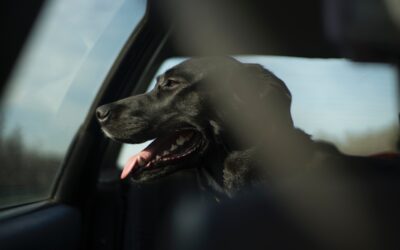To hunt mountain lions without dogs, track signs like paw prints, scat, and scrapes. Study the terrain and stay downwind to remain undetected by the elusive predator.
- The Call Of The Wild: Mountain Lion Hunting Essentials
- Silent Tracking: Reading Signs In Nature
- Stalking Techniques: Mastering Patience And Precision
- Employing Call And Decoy Strategies
- Critical Moments: Making The Ethical Shot
- After The Hunt: Conservation And Ethics
- Frequently Asked Questions On How To Hunt Mountain Lions Without Dogs
- Conclusion
Mountain lion hunting is a challenging endeavor that demands expertise in tracking and patience. Seasoned hunters know the importance of reading natural signs and understanding the behavior of their quarry. With the absence of dogs, the hunter relies on physical evidence such as footprints, kill sites, and territorial marks to locate the mountain lion.
Silence is paramount; human presence must be masked by meticulous movement and strategic positioning. Utilizing high vantage points and glassing extensive areas with binoculars increase the chance of spotting a lion. Preparation is key, from mastering the use of the right equipment to being physically fit for strenuous stalking in rugged environments. This type of hunt is not only a test of skill but also a profound interaction with the wild, offering an intense experience that hones one’s instincts and respect for nature.
The Call Of The Wild: Mountain Lion Hunting Essentials
To effectively hunt mountain lions without dogs, specific equipment is critical. Sturdy boots protect your feet across rough terrains. High-quality binoculars help locate distant targets. Always carry a reliable weapon, ideally a large-caliber rifle. Essential too are navigation tools such as a compass and GPS device. Camo clothing is a must to blend into the environment.
Understanding mountain lion habits boosts success rates. They prefer dawn and dusk for hunting. Take advantage of natural cover and wind direction. Remain quiet and patient.
Silent Tracking: Reading Signs In Nature
Hunting mountain lions without dogs demands exceptional skills in silent tracking. Spotting mountain lion tracks is crucial. Look for large, roundish prints with no claw marks, often about the size of an adult human hand. Fresh paw prints in soft ground, snow, or mud are tell-tale signs of recent activity.
Keen observation of scat and scratch marks on trees can also clue you in on a lion’s presence. Rely on the silence and use natural landscapes to your advantage. Moving through dense brush can help mask noise. Following ridgelines and waterways can guide you while remaining undetected. Remember, these majestic creatures are masters of their domain. Respect and caution are paramount.
Stalking Techniques: Mastering Patience And Precision
Stalking mountain lions demands utmost stealth. To achieve invisibility in the wild, environment blending is key. Wear earth-toned clothing to mimic natural surroundings. Quiet movement and strategic positioning are crucial for concealment.
Moving closer to the lion calls for careful footsteps. Utilize natural covers like bushes and rocks. Patience is a virtue in this game. Each step must be deliberated; sudden movements can spoil the hunt. Observe wind direction to avoid scent detection.
Employing Call And Decoy Strategies
Mastering mountain lion vocalizations can significantly increase your chances of a successful hunt. Sounds that mimic young lions in distress or calls imitating a potential mate can be particularly effective. Hunters often employ these sounds through electronic calls or mouth calls, which, when played intermittently, can lure in a curious or territorial mountain lion.
Decoys also play a critical role when hunting mountain lions. A moving decoy that simulates a prey animal can attract a lion’s attention. Use decoys with realistic movements to create an illusion of live prey. Position these strategically in open areas where visibility is clear, and always remain downwind to keep your scent undetected.
Critical Moments: Making The Ethical Shot
Hunting mountain lions is a task that demands ethical decision-making and skill. Ensuring a compassionate, swift kill is crucial. Do not rush to take the shot without proper alignment. The perfect moment hinges on clear visibility and the mountain lion’s stable positioning.
The bullet’s trajectory and wind influence are vital factors. Study the bullet path beforehand. Knowledge of how wind alters bullet flight improves accuracy. A precise shot saves the animal from prolonged suffering and honors the sport’s ethics.
Timing and environmental variables impact your shot’s effectiveness. Patience is key. Wait for a time when the mountain lion is calm. Make sure the wind is stable. This ensures your shot travels true, resulting in a humane hunt.
After The Hunt: Conservation And Ethics
Respect for the ecosystem is vital after a mountain lion hunt. Handling your harvest with care matters for sustainability and ethics. By doing so, hunters honor the animal and support conservation efforts.
Accurate reporting of your hunt to wildlife officials ensures a balanced approach to species management. It helps monitor population health and informs future conservation plans. Your actions contribute to the wellbeing of the species and ecological integrity.
Frequently Asked Questions On How To Hunt Mountain Lions Without Dogs
What Equipment Is Needed For Mountain Lion Hunting?
To hunt mountain lions without dogs, essential equipment includes a high-caliber rifle, suitable camouflage, a reliable GPS device, and sturdy hiking boots. Make sure you’re well-prepared for the terrain and weather conditions you’ll face.
How To Track A Mountain Lion Successfully?
Tracking a mountain lion involves identifying and following signs such as tracks, scat, and scratches on trees. Pay attention to the direction of the tracks and the freshness to predict the lion’s path. Always prioritize safety and legality in your tracking methods.
Is It Legal To Hunt Mountain Lions?
Mountain lion hunting legality varies by jurisdiction. Check local wildlife regulations and obtain necessary permits or licenses. Some regions may have specific seasons or require tags, and in others, mountain lion hunting might be entirely prohibited.
What Techniques Are Effective For Stalking Mountain Lions?
Effective techniques for stalking mountain lions include moving quietly, staying downwind, and utilizing natural cover. Being patient and observant is crucial. Study the behavior of mountain lions and plan your approach accordingly to increase your chances of a successful hunt.
Conclusion
Ending your quest for a dog-free mountain lion hunt, remember patience and preparation are key. Embrace the challenge, respect the wildlife, and prioritize safety always. Equip yourself with knowledge, practice ethical hunting, and nature may reward your efforts with success.
Happy hunting and tread lightly on these ancient trails.


